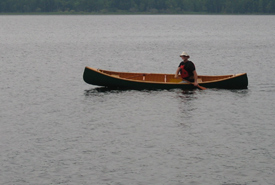Lessons in winter wildlife photography
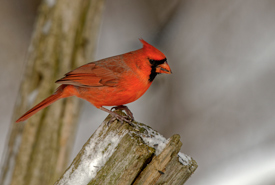
Male cardinal (Photo by Lorne)
Distant memories of my first film camera come to mind when I think about photography. Its silver colour and round dials looked impressive, everything was manual, all decisions were mine and feedback was non-existent, until the film was processed. But comparing it to today’s sleek, multi-programmable digital cameras is like comparing apples to oranges.
When photographing wildlife, always respect their space and habitat. Read these guidelines on ethical bird photography from Audubon.
Understand your gear
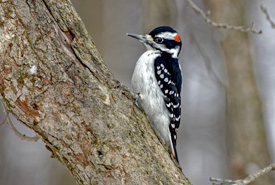
Hairy woodpecker (Photo by Lorne)
To capture National Geographic-worthy shots, let’s begin with your existing kit. Blaming it for marginal results is akin to blaming your stove for a poor meal. While a high-end lens can make your images better and a professional camera body can increase your chances of capturing the perfect shot, no camera/lens combination will magically create quality images without an improved skill set. For that reason, and with so much theory and advice available, research when necessary, filter the information and prioritize your needs.
Perhaps start with the exposure triangle — ISO, aperture and shutter speed — and practise working with the variables until you understand the relationships between those three. Discover how changes with exposure compensation will affect your images, and distance yourself from using the designated scene settings on the camera. Look at shooting in manual mode as an alternative to either shutter or aperture priority.
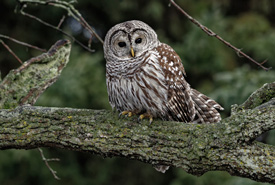
Barred owl (Photo by Lorne)
Explore the benefits of shooting in raw file format as opposed to JPEG, and work on improving your post-processing through the use of good software. Aim to reach the point where deciding which photography tools to use becomes second nature, and make an effort to step outside your comfort zone.
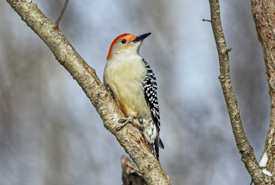
Red-bellied woodpecker (Photo by Lorne)
Understand your subjects
Another important step is to develop a better understanding of the wildlife you hope to find and photograph. Being in the right place at the right time does happen, but it’s with increased knowledge, observation and listening that you can jump-start your chances at getting that perfect shot.
For example, when you’re walking through a mixed woodlot, you might come across a northern saw-whet owl roosting in dense conifer boughs. There are benefits to knowing that this tiny, opportunistic hunter might catch more in one day than it can eat, caching its surplus in trees for when hunting is poor. A frozen mouse can be "incubated" and thawed, and a plentiful, daily food supply increases the saw-whet’s chances of wintering over and surviving. For the owl, it’s winter dining at its best — fresh or frozen — and for you, it might result in more shooting opportunities when returning with your camera.
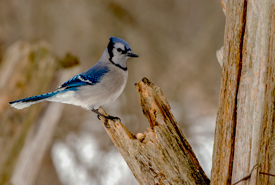
Blue jay (Photo by Lorne)
Dress for the occasion
At this time of year, I encourage you put on suitable winter gear and head out to enjoy the clean, cold air. Tap into personal experiences about how to dress, and/or seek advice from others; but winter shooting, while very rewarding, can also have pitfalls. Learn about the importance of a good base layer (and the possible dangers when cotton gets wet), and discover that layering is something to be practised.
Be aware that bulky, warm footwear has obvious benefits when stationary for a long time, but you might find that good hiking boots and gaiters are more desirable when active. Use warm shooting gloves that can be transformed quickly when the moment comes, and minimize heat loss through your head by wearing a warm hat. Find the time to become an informed hiker and apply those lessons learned to make winter photography sessions not only safer, but more enjoyable.
Be prepared
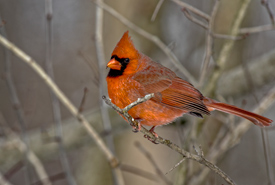
Cardinal (Photo by Lorne)
And don’t forget to care for your kit, too. Are your cameras and lenses weather sealed? If not, do you have a rain/snow cover to protect the electronics in inclement weather? Are your batteries fully charged? When venturing out, do you have an extra battery stored in a warm place? Did you bring an extra memory card? Do you know how to prevent fogging and condensation from forming on your equipment?
On a personal note, I see wildlife photography as a journey through the seasons. I think about the footprints left behind and those to come; I encourage you on your journey to do the same.

